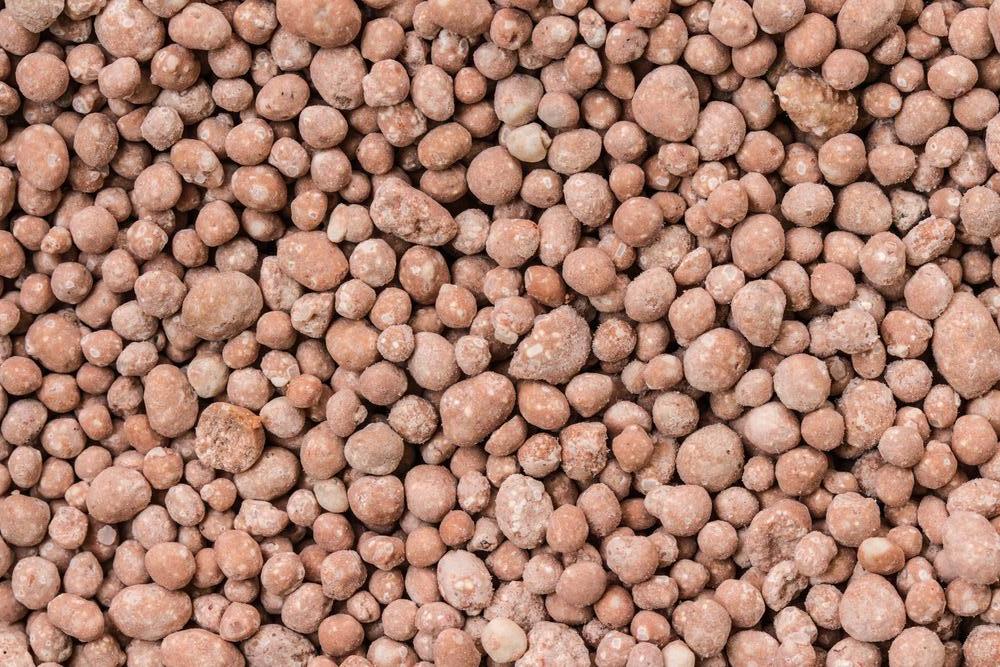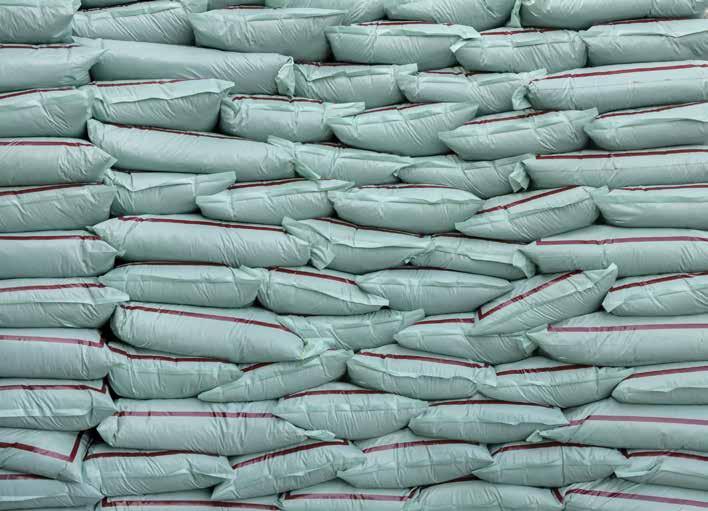
6 minute read
with the right feeding strategy
They are what they eat:
Keeping cows fit and healthy longer with the right feeding strategy
Advertisement
What goes for human beings, also goes for dairy cows: A healthy and individually tailored diet is one of the most important requirements for high performance and wellbeing. With GEA’s automated feeding systems, the perfect recipe can be conveniently delivered to each animal group. Years of experience as well as the latest scientific findings advise systems for precision feeding. The success speaks for itself: Farmers are achieving significantly improved animal health with above average herd performance. In addition, better feed quality and resource-friendly feed conversion go hand in hand with huge time and labor savings, as well as the ability to optimize feeding strategies in a targeted and result-oriented manner.
Good feed mix: optimized dosed rations down to the gram
Measuring out fodder is surprisingly easy in the feed kitchen. Depending on the size of an operation and the number of animals needing to be fed, space-saving bunkers for basic feed types as well as containers for minerals are installed. The recipes, selected feed types and desired quantities can be conveniently entered into the WIC System. Weighing and mixing take place automatically in the stationary mixer or directly in the feed wagon. And while the feed wagon provides the selected animal groups with individual, freshly prepared rations at predetermined times, current milking results can be checked against the feeding strategy. Precisely these valuable conclusions help dairy farmers achieve short- and long-term goals. Because results can be replicated, producers are able to continually optimize the feeding.
More animal groups, better feed supply, less work
It’s clear that individual feed mixes designed to suit a cow’s nutritional needs will best support its performance. In conventional feeding systems, however, dividing animals into performance groups, means a corresponding increase in work hours. With GEA’s automated feeding systems, it doesn’t matter how many groups are desired, the only work required is filling the bunkers, which only takes about 30 minutes. Every animal group is provided with the optimal feed ration: cows at the beginning or the end of lactation, dry cows as well as youngstock and heifers receive exactly the rations they need for their current lactation phase, their calculated calving period or their recommended weight gain.
Healthy growth supports productivity for a lifetime Heifers are the cows of the future. The way they are fed improves not only their well-being, but has a direct influence on their lifelong productivity. To support growth in the best possible way, GEA has developed automated feeding systems, where even small batches can easily be mixed and distributed according to plan. The latest research shows that heifers that were fed according to a precise feeding plan grew faster.
In addition, they calved significantly earlier than in the conventionally fed control group (22.2 compared to 24.6 months). Meanwhile, the costs for rations as well as feed and supplements were nearly identical in both groups. Thanks to the earlier age at first calving and the increased willingness to perform over the animal’s entire life cycle, an investment in the automated feeding system pays off. The additional time required for preparing and distributing smaller rations is taken on by the system.
Better feed intake through frequent feeding
Feeding that is efficient for the farmer also helps cows absorb nutrients better for their own energy balance. In a cow’s stomach, there are millions of active bacteria that support the digestion of plant fibers. Because microorganisms cannot adapt very well, they need a relatively stable environment to carry out their tasks. The ideal pH level for a good feed conversion is at 5.5 – 6. An efficient method to keep the pH level in the rumen as consistent as possible is to provide feed throughout the day. Another argument for frequent feeding is supplied by the cow herself: her tendency to sort against small particles in her feed contributes to an unbalanced diet, which in turn has a negative impact on the pH level in the rumen. Here, too, frequent feeding is a successful countermeasure, as it verifiably reduces variations in the pH value during the day.
Secure nutrient supply also for subordinate animals
The last in line only get the leftovers: this often applies when feed is conventionally distributed on the feeding table. Since the nutritional value of the ingredients begins to deteriorate as soon as feed is distributed, low ranking cows, who are initially denied access to the feeding table, can maintain neither their feed and nutrient intake nor milk production to the full extent.
The common practice of pushing the feed forward may provide all cows with access to it, but cannot guarantee the uniform quality of the feed mix. When animals are fed more often, they distribute their feed intake more evenly throughout the day. At the same time, the movement profile of lower ranking cows reveals that when they get equal access to the feeding table, they are better fed with all the necessary nutrients. The otherwise labor-intensive processes of weighing, mixing and distributing can conveniently be carried out by the automated feeding system. All programmed tasks are taken care of on time, precisely according to plan.
Feed quality - the mix is crucial
Back to feed quality and the advantages of a feed kitchen: At conventionally feeding dairy farms, mixed feed rations are often exposed to the air for long periods, which accelerates the deterioration and decay of nutrients particularly during the summer months. In automated feeding systems, this process is slowed down by the storage in feed bunkers, because feed is only prepared and mixed during each day as needed. Aside from the order of feed components, a feed mixture can be optimized by the type of cut applied as well as single or multiple mixing.

Best results are achieved when starting with dry and ending with wet ingredients. That’s why farmers using GEA’s systems recommend beginning with dry fodder and grains, then adding concentrates, minerals and vitamins and finishing with silage, molasses and water. This is how the feed kitchen offers the best conditions, because it’s the quality of the mix that determines whether cows take in the right amount of nutrients for milk production, reproduction and good.
Reproducible results make it easy to optimize feeding practices
A pioneering function in automated feeding consists of updated performance indicators supplied by process control and the software. To this end, daily procedures such as feed quantities distributed per group, mixing times or feed intake are recorded and referenced. The immediate evaluation and analysis in connection with information on milk performance of individual animal groups or heifers’ weight gain make it particularly easy for the farmers to make changes to feeding plans in real time and to improve feeding efficiency step by step. It makes no difference whether the farm feeds a full, partial or mixed ration in combination with grazing.


Latest research findings served fresh to the feeding table. The proof is in the research: for cows’ well-being, health and vitality, freshly prepared feed should be distributed multiple times a day and as individually as possible.
Feeding strategy, feeding frequency and feed mix are directly connected to animal stamina, milk yield and milk quality. The fact that efficient feeding and a successful feed strategy is not only good for cows, but is generally the decisive factor for the profitability of dairy farms, can not only be seen in improved herd performance, but is directly connected to sustainable feed implementation, savings in feed costs as well as improved reproduction. With significant labor savings, GEA’s automated feeding systems offer every opportunity to test, analyze and reproduce promising feeding strategies at any time.











